第58章 Chapter 7 Dress as an Expression of the Pecuniary
The exceptions under this rule of exemption from the corset are more apparent than real. They are the wealthy classes of countries with a lower industrial structure -- nearer the archaic, quasi-industrial type -- together with the later accessions of the wealthy classes in the more advanced industrial communities. The latter have not yet had time to divest themselves of the plebeian canons of taste and of reputability carried over from their former, lower pecuniary grade. Such survival of the corset is not infrequent among the higher social classes of those American cities, for instance, which have recently and rapidly risen into opulence. If the word be used as a technical term, without any odious implication, it may be said that the corset persists in great measure through the period of snobbery -- the interval of uncertainty and of transition from a lower to the upper levels of pecuniary culture. That is to say, in all countries which have inherited the corset it continues in use wherever and so long as it serves its purpose as an evidence of honorific leisure by arguing physical disability in the wearer. The same rule of course applies to other mutilations and contrivances for decreasing the visible efficiency of the individual.
Something similar should hold true with respect to divers items of conspicuous consumption, and indeed something of the kind does seem to hold to a slight degree of sundry features of dress, especially if such features involve a marked discomfort or appearance of discomfort to the wearer. During the past one hundred years there is a tendency perceptible, in the development of men's dress especially, to discontinue methods of expenditure and the use of symbols of leisure which must have been irksome, which may have served a good purpose in their time, but the continuation of which among the upper classes today would be a work of supererogation; as, for instance, the use of powdered wigs and of gold lace, and the practice of constantly shaving the face. There has of late years been some slight recrudescence of the shaven face in polite society, but this is probably a transient and unadvised mimicry of the fashion imposed upon body servants, and it may fairly be expected to go the way of the powdered wig of our grandfathers.
These indices and others which resemble them in point of the boldness with which they point out to all observers the habitual uselessness of those persons who employ them, have been replaced by other, more dedicate methods of expressing the same fact; methods which are no less evident to the trained eyes of that smaller, select circle whose good opinion is chiefly sought. The earlier and cruder method of advertisement held its ground so long as the public to which the exhibitor had to appeal comprised large portions of the community who were not trained to detect delicate variations in the evidences of wealth and leisure. The method of advertisement undergoes a refinement when a sufficiently large wealthy class has developed, who have the leisure for acquiring skill in interpreting the subtler signs of expenditure. "Loud" dress becomes offensive to people of taste, as evincing an undue desire to reach and impress the untrained sensibilities of the vulgar. To the individual of high breeding, it is only the more honorific esteem accorded by the cultivated sense of the members of his own high class that is of material consequence. Since the wealthy leisure class has grown so large, or the contact of the leisure-class individual with members of his own class has grown so wide, as to constitute a human environment sufficient for the honorific purpose, there arises a tendency to exclude the baser elements of the population from the scheme even as spectators whose applause or mortification should be sought. The result of all this is a refinement of methods, a resort to subtler contrivances, and a spiritualization of the scheme of symbolism in dress. And as this upper leisure class sets the pace in all matters of decency, the result for the rest of society also is a gradual amelioration of the scheme of dress.
As the community advances in wealth and culture, the ability to pay is put in evidence by means which require a progressively nicer discrimination in the beholder. This nicer discrimination between advertising media is in fact a very large element of the higher pecuniary culture.